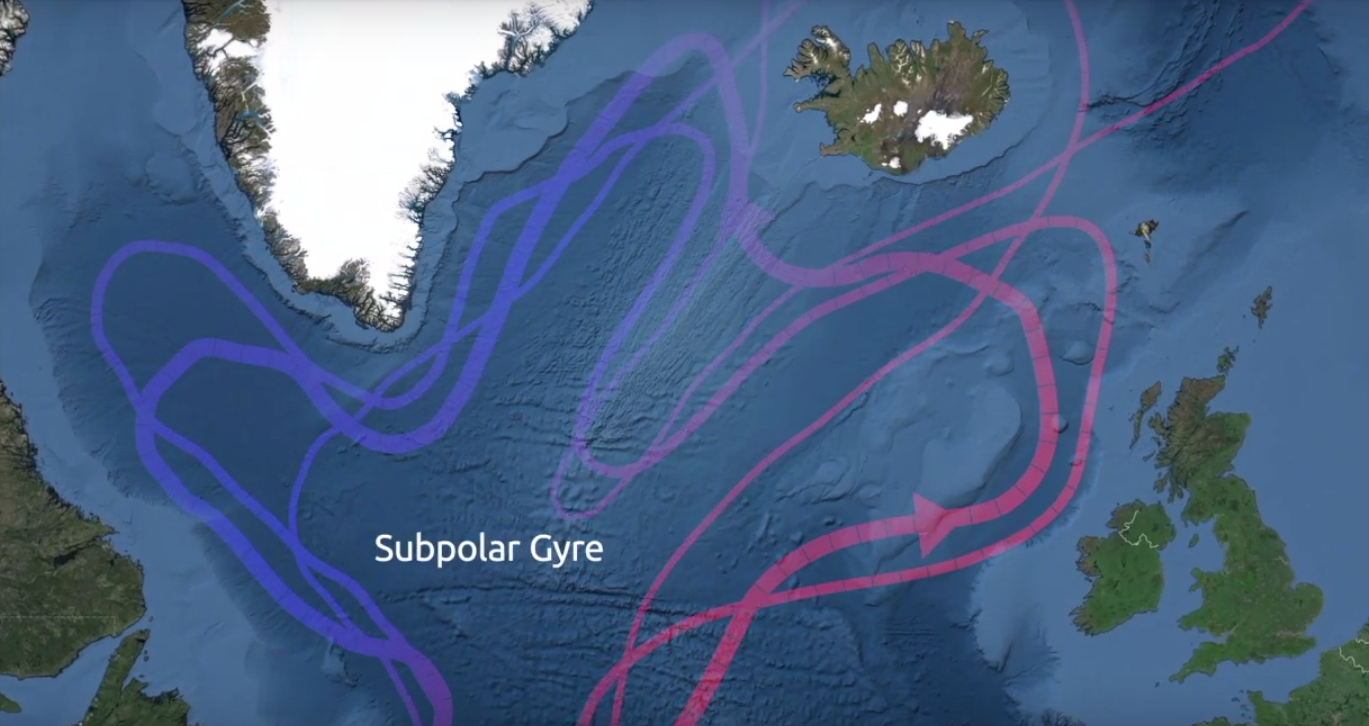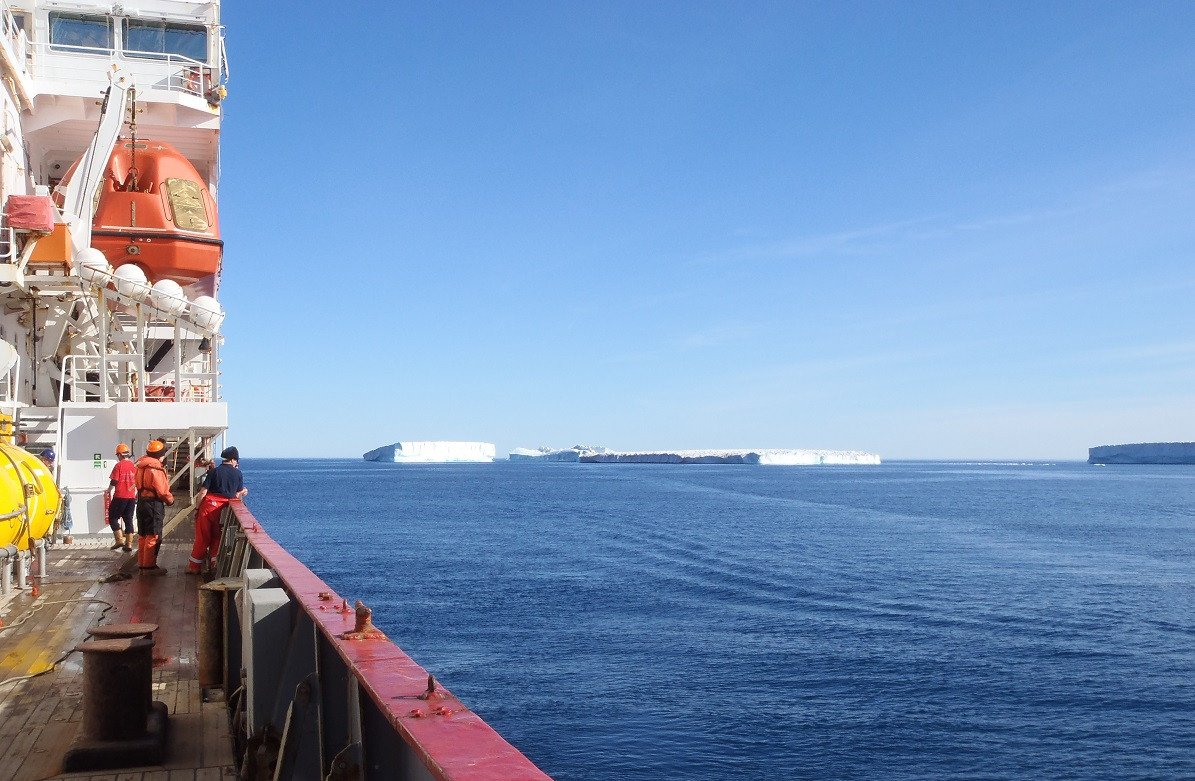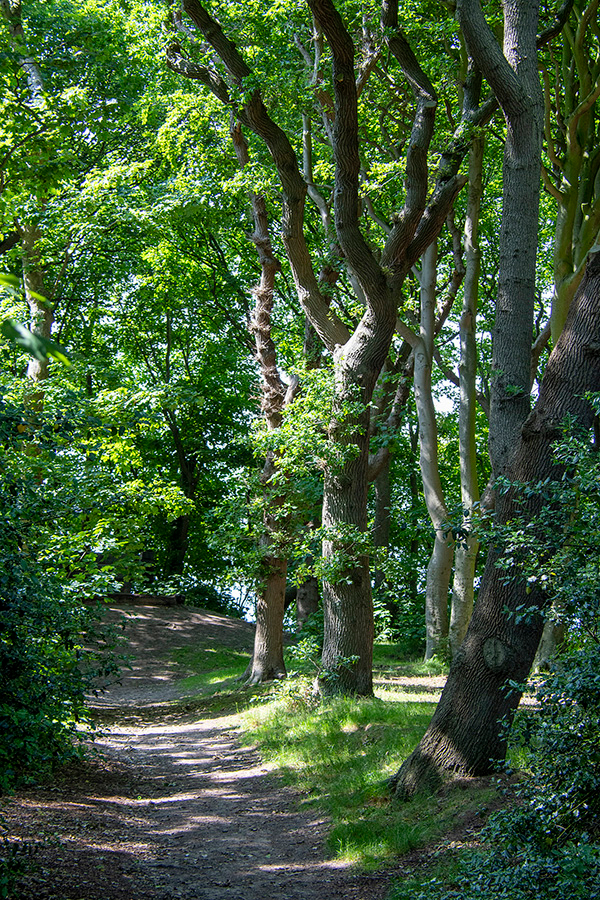Stromingen
~~~ for english scroll down ~~~
Oceanograaf dr. Femke de Jong brengt de verschillende stromen in de oceanen in kaart. ‘Een heel belangrijke stroming bevindt zich in de bovenste laag van de Atlantische Oceaan, die beweegt van Florida naar het noorden. Die stroming brengt warmte onze kant op. Zonder die noordwaartse Atlantische stroom, zou het in onze omgeving een stuk kouder zijn.’
Boeien aan de bodem
‘Ook al zijn de plekken en de richting van de grote oceaanstromingen al heel lang bekend, we weten nog maar weinig over hoe ze veranderen. Onder andere met hulp van instrumenten aan kilometerslange kabels, overeind gehouden door boeien en verankerd aan de zeebodem met een zwaar gewicht, houden we dag in dag uit de temperatuur en de stromingsrichting van het water in het noordelijke deel van de Atlantische Oceaan in de gaten. Subtiele veranderingen door bijvoorbeeld meer smeltend ijs rond de Noordpool, kunnen grote gevolgen hebben voor ons klimaat.’
Dansende boeien
Behalve met vaste boeien, houden Femke en haar internationale collega’s de verschillende bewegingen in de oceaan ook in de gaten met behulp van automatische meetstations. ‘Die zogeheten “ARGO-floats” drijven vrij in de oceaan en gaan op gezette tijden vanzelf naar beneden om metingen te doen. Na een tijdje drijven ze weer naar het oppervlak, waar ze de meetgegevens naar een satelliet versturen, die ze weer doorstuurt naar onze computers. Dat scheelt een hoop op en neer varen naar de oudere boeien om de gegevens op te halen en geeft ook wetenschappers zonder eigen onderzoeksschepen toegang tot de oceaan.’
Het weer onder water
‘Wanneer je alle subtiele stromen in de oceanen op een kaart tekent, met verschillende kleuren voor de verschillende temperaturen of zoutgehalten, wordt dat al een kunstwerk op zich; bijna een Van Gogh. Net zoals een weerkaart met hoge- en lagedrukgebieden, heb je in de oceaan allemaal grotere en kleinere wervelingen die warmte over de aarde verplaatsen. Eigenlijk bestuderen we met de oceaanstromen het weer onder water.’
Meer info over het onderzoek van Femke de Jong vind je hier.

Ocean currents are the driving force behind climate
Oceanographer Dr Femke de Jong charts the different currents in the oceans. ‘One vitally important current is located in the top layer of the Atlantic Ocean, running northwards from Florida. This current brings heat our way. Without this northwards Atlantic current, it would be much colder in this part of the world.’
Buoys anchored to the seabed
‘Although we’ve known the locations and directions of the major ocean currents for a long time, we still know very little about how they change. We use instruments attached to kilometres of cable, held up by buoys and anchored to the seabed with heavy weights, to monitor the temperature and direction of the water currents in the North Atlantic, day in, day out. Subtle changes due to, for example, increased ice melt around the North Pole can have major consequences for the earth’s climate.’
Dancing buoys
In addition to fixed buoys, Femke and her international colleagues also use automatic measuring stations to monitor the different movements in the ocean. ‘These “Argo floats” drift freely in the ocean and dive automatically at set times to take measurements. After a while they float back to the surface and send the measurement data to a satellite, which in turn sends it to our computers. This saves a lot of sailing back and forth to the older buoys to collect data and also gives scientists without their own research vessels access to the ocean.’
The weather under water
‘If you draw all the subtle currents in the oceans on a map, using different colours for the different temperatures or salinities, it becomes a work of art in itself – almost a Van Gogh. Just like a weather map with high and low pressure areas, the ocean has all kinds of large and small eddies that transport heat around the earth. By studying ocean currents, we’re actually studying the weather under water.’
More information on the research of Femke de Jong you will find here.


SEA Art tour Stromingen
By Gerrit Rietveld students
In november 2018 zijn de studenten van de Gerrit Rietveld Academie en hun leerkrachten een week naar Texel gekomen om het bos op de Hogeberg, ‘’t Bossie’, te ervaren. Ook kregen zij een lezing van wetenschapper Dr. Femke de Jong, die zeestromingen bestudeert.
De opdracht luidde: bedenk een kunstwerk dat aansluit bij het onderzoek van Femke de Jong en past bij de locatie ’t Bossie. In de maanden daarna hebben zij aan hun ideeën gewerkt.
